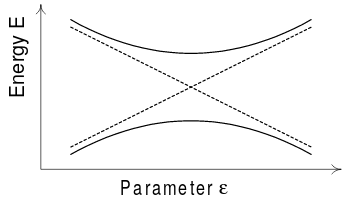As khown, Chladni figures display nodal lines of eigenfunctions satisfying the equation $\Delta^2\psi=k^4\psi$ with appropriate boundary conditions. One can note these lines don't like to cross each other:

H.-J. Stöckmann in "Quantum chaos. An introduction", 1999 writes (page 17):
The interpretation of Chladni figures of irregularly shaped plates is thus intimately connected with the quantum mechanics of chaotic billiards. $\langle\ldots\rangle$ Figure 2.2(a) shows one of the nodal patterns for a circular plate observed by a Chladni himself. We find a regular net of intersecting circles and straight lines typical for integrable systems. The central mounting does not disturb the integrability since the rotational invariance is not broken.
The situation is different for rectangular plates (see Fig. 2.2(b)). Here the mounting reduces the symmetry, and the billiard becomes pseudointegrable $\langle\ldots\rangle$.
Figure 2.2(c) finally displays a Chladni figure for a nonintegrable plate in the shape of a quarter Sinai billiard.
M.C. Gutzwiller in "Chaos in Classical and Quantum Mechanics", 1990 writes a similar thing (page 234):
A theorem by Uhlenbeck (1976) states that it is a generic property of eigenfunctions to have non-intersecting nodal lines.
So we see the nodal lines usually avoid to cross. The crossing nodal lines is an exceptional situation which requires some additional conditions (e.g. integrability of the billiard) and can easily be destroyed by perturbations.
QUESTION: is there any mathematical of physical analogy between anticrossing of nodal lines and anticrossing of energy level in quantum systems? When we change parameters of a Hamiltonian, energy levels cross in integrable systems and repulse in chaotic ones - just the same behavior is demonstrated by the nodal lines, although in coordinate space. Can this analogy be somehow described quantitatively, or it is just a coincidence?


